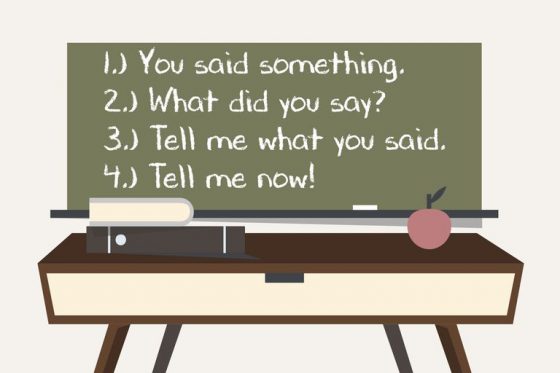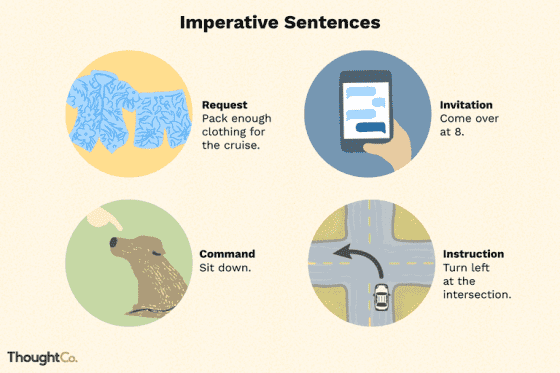Table of Contents
Sentence structure is to words what a brushstroke is to colour. Did you know that on a daily basis we use 4 types of sentences to express what we want to say? Sentences are the essence of writing. The way you put your ideas into words and structure an articulate sentence reflects your flair for writing.
Choosing the right words and using them in the right kind of sentence can heighten the meaning of the sentences. Therefore, it is essential that you know how to differentiate one type of sentence from another so that you can accomplish the purpose. If you want to bring out the message you want to convey clearly, then you need to know how to use sentences properly.
That brings us to the question – What are the types of sentences?

Image 1: 4 types of sentences
To start with, there are four types of sentences. A sentence either states something or asks a question. It can also give an order or express an emotion. In grammatical terms the 4 different types of sentences structure are as follows:
Each of the above kind of sentences has its own functions and fulfils a different purpose. Therefore, you must understand how and when to use them.
Here is a guide from professional writers on the different types of sentences and how to use them.
Declarative sentences are used to share information and ideas. Through a declarative sentence, you can state, assert or declare something. This type of sentence structure is mostly used while writing speeches and lectures where facts are being asserted. In such a sentence, the subject precedes the verb, and it always ends with a period or a full-stop mark.

Image 2: The Structure of a Declarative Statement
You can even express a feeling through a declarative statement, but it should not show the feeling too strongly. For example “I like reading books” is a sentence that informs the reader that you like to read books without any explicit show of emotion.
Here are a few examples of using a declarative sentence:
An interrogative sentence is a question that always ends with question marks (?). A question is basically a request or a command for information only more polite. Depending on your query we use interrogative connotations like who, what, where, when, why, how. In stark contrast to the declarative statement, the verb comes before the subject.
To form a question you need to replace a piece of information with a wh-word and follow it with the verb.
For example, “Where is the cat?” – Note how the subject (the cat) comes in the end.
Or, “How are dogs as pets?” – Note the question structure of verb + subject + predicate
Or, “Where can I get the tickets from?” – Notice how the helping verb is inverted and the preposition “from” comes in the end.
Another way of writing an interrogative sentence is by adding a question tag after a statement.
For example, “She is coming to the party, isn’t she?”
Or, “She doesn’t need help, does she?”
Note how a positive declarative sentence ends with a negative question tag, but a negative sentence ends with a positive question tag.
An imperative sentence gives instruction, request, or demand. It can also be used to share a wish and make an invitation. Basically, imperative sentences tell someone what to do. Now you may think that writing an imperative sentence can be easy, but you need to keep the role of the sentence in mind. Is it giving an order or telling someone to take action? – You need to ascertain that before you write the sentence.
Depending on the purpose, the tone of such a sentence can be neutral or express strong emotions. For example, a sentence like “Get me a glass of water!” and a sentence like “Please get me a glass of water” both are imperative sentences. One is a command while the other is a request.

Image 4: Imperative sentence types
Source: https://www.thoughtco.com/imperative-sentence-grammar-1691152
Here are some other examples:
Through an exclamatory sentence, you can share a strong emotion like sadness or (as the name suggests) excitement. Exclamatory sentences mostly follow the sentence structure of a declarative sentence in form and function. The only difference is that this sentence reflects more emotion. Exclamatory sentences always end with the exclamatory mark (!) and may not always be a full sentence. The purpose of using an exclamatory sentence is to put more force into the words of a sentence and make it more impactful. An exclamation mark just makes a simple declarative statement more exciting and loud.
You can even reduce the usage of the word VERY (often an overused adjective) with the exclamation mark. For example, a sentence like “The pasta tasted very bland.” can be replaced with an exclamatory sentence like “How bland the pasta was!”
Take note of the last sentence and understand how to use exclamation points properly. Avoid using exclamation sentences one after the other as that may make the message too loud. Moreover, it may divert the attention of the reader from the most important sentence.
A perfect written assignment is one that is composed of the right types of sentences that helps to bring out the message of the content more clearly. If you want to submit a winning paper that has all the correct sentence structures, then you can hire our assignment writers.
Our expert writers know all the rules to deliver a stellar piece of writing. We offer assignment help for all kinds of academic papers – be it an essay, a thesis or a research paper.
You can avail our quality services at the most affordable rates. To hire our services, you can call us or drop us an email at [email protected], and we promise to help you fly high.